PATRIOTS OF PERU DURING THE AMERICAN
REVOLUTIONARY WAR
BY Granville Hough, Ph.D.
(continued, surnames beginning with B.)
Ambrosio Bacareza. Lt, Milicias Disciplinadas Dragones de Lima,
1790. Leg 7283:IX:47.
Cayetano Bacareza. Lt, Milicias Discip de Dragones de Lima 1800. Leg
7288:XXIV:35.
Jacabo Badaran. Capt, Inf Real de Lima, 1793. Leg
7284:IX:25.
José Maria Badillo y Guerra. SubLt, Milicias Discip de Inf de
Cuzco,1800. Leg 7286:XXIV:28.
Francisco Baella. Capt, Milicias Prov de Dragones de Chota, 1797.
Leg 7287:XIII:12.
Ignacio Baez.Sgt, Milicias Prov Discip Cab de Arnero y Chancay, 1800. Leg
7288:III:30
Antonio Baeza. Lt, Milicias Discip de Dragones de Lima, 1800.
Leg 7288:XXIV:42.
Miguel Bahamonde. SubLt grad, Inf Real de Lima, 1800. Leg
7288:XXII:81.
José Antonio Balao. Sgt 1st Cl of Grenaderos, Milicias Prov
Urbanas Inf de Huánuco, 1796. Leg 7286:V:32.
César Balbiana. Lt Col, Comp Veterans de la dotación de Chiloe, 1800. Leg
7288: XI:15.
Pedro Baldelomar. Lt de Carabineros, Milicias Discip de Cab de Ica,
1800.
Leg 7288:XX:12.
Mariano Baluarte. Sgt, Inf Real de Lima, 1800. Leg 7288:XXII:103.
Matías Baluarte. Audante Mayor, Milicias Discip Dragones de Arica,
1800. Leg 7288:II:25.
Tomáa Ballesteros. ???, Inf Real de Lima, 1800. Leg
7288:XXII:96.
Francisco Banda. Capt, Milicias Discip de Pardos y Morenos Inf de
Lambayaque, 1797. Leg 7287:XXIII:5.
José de la Banda. Ayudante, Milicias Prov Discip de Cab de Cuzco,
1797. Leg 7287:X:18.
Miguel Bandin. Sgt, Milicias Prov de Dragones de Carabayllo, 1797.
Leg 7287:VII:39.
Angel Francisco de Baraibar. Cadet, Escuadrón de Cab de Milicias
Urbanas de Moquegua, 1800. Leg 7288:XXVII:14.
Joaquin Baraibar. SubLt, Milicias Urbanas Inf Moquegua, 1797.
Leg 7287:XXVI:22.
José Baraibar. Capt, Milicias Urbanas Inf Moquegua, 1797.
Leg 7287:XXVI:11.
Juan Ignacio de Baraibar. Lt, Escuadrón de Cab de Milicias
Urbanas de Moquegua,
1800. Leg 7288:XXVII:8. Juan de Dios Baraona. Sgt, Bn Prov
Milicias Discip Inf Española de Lima, 1800. Leg 7288:XXIII:58.
Nicolás Barba. Sgt, Bn Prov de Milicias de Pardos Libres de Lima,
1796. Leg 7286:XII:57.
José Barberis. Alférez, Milicias Prov Discip de Cab de Arequipa,
1797. Leg 7287:II:42.
Andrés Barbero. Sgt, Inf Real de Lima, 1793. Leg
7284:IX:86.
Manuel Barbosa. Lt, Milicias Urbanas, Cab San Pablo de Chalaquez,
1798. Leg 7287:XI:21.
Leandro Barbosa. Sgt, Milicias Prov Urbanas de Dragones de Huambos,
Partido de Cajamarca, 1792. Leg 7284:XIV:35.
Francisco Barcenas. Cadet, Comp Sueltas Milicias Discip de Inf de
Ica, 1795. Leg 7285:XVI:26.
Manuel Barcenas. Cadet, Comp Sueltas de Milicias Discip Inf de Ica,
1800. Leg 7288:XIX:20.
Buenaventura del Barco. Capt, Escuadrones Cab Milicias Urbanas de
los territoros de Huancabamba, Chalaco, y Piura, 1797. Leg
7287:XXXIV:4.
Gabriel Bartolome. SubLt, grad, Inf Real de Lima, 1800. Leg
7288:XXII:80.
Pablo de la Barra. Lt, Milicias Prov Discip de Inf de Arequipa,
1800. Leg 7288:I:28.
Francisco Barragan. Alférez, Milicias Discip Cab de Ferreñafe,
1797. Leg 7287:XIV:34.
José Barragan. Capt, Milicias Discip Cab de Ferreñafe, 1797.
Leg 7287:XIV:13.
Fernando Barrantes. Lt, Inf Real de Lima, 1800. Leg
7288:XXII:33.
José Barrantes. Cadet, Inf Real de Lima, 1788. Leg
7283:II:128.
Vicente Barrantes y Valera. Alférez, Milicias prov Urbanas de
Dragones de Chota, 1797. Leg 7287:XIII:33.
Dionisio Barraza. Lt, Milicias Discip Dragones de Lima, 1796.
Leg 7283:IX:49.
Manuel Barreda Bustamante. Alférez, Milicias Prov de Dragones del
Valle de Majes, 1797. Leg 7287:XXV:29.
Manuel Barrena. Ayudante Mayor, Milicias Urbanas Cab San Pablo de
Chalaquez, 1798. Leg 7287:XI:22.
Carlos Barreneche. SubLt, Milicias Prov Urbanas Inf de Huanca,
1800. Leg 7288:XVIII:52.
Laureano de la Barrera. Ayudante Mayor Milicias Discip Cab de
Trujillo, Peru, 1800. Leg 7288:XXXI:9.
Matías Barrera. Sgt, Bn Milicias Urbanas Inf de Andahuailas,
1801. Leg 7286:XXII:27.
Santiago Barreto. Sgt, Milicias Discip Cap Ferreñafe, 1797.
Leg 7287:XIV:45.
Sebastian Barreto. Lt, Bn Milicias Prov Discip Inf de San Miguel
de Piura, 1800. Leg 7286:XXV:15.
Francisco Javier Barria. SubLt, 2d Comp, Inf Discip de San Carlos
de Quetalmahue, Chiloe, 1800. Leg 7288:VII:3.
Juan Bautista Barria. Capt, 2d Comp, Inf Discip de San Carlos de
Quetalmahue, Chiloe, 1800. Leg 7288:VII:1.
Modesto Barria. Sgt, Milicias Prov Discip de Inf de Castro, Chiloe,
1800. Leg 7288:IX:93.
Vinancio Barria. Sgt, Milicias Discip de Inf de Castro, Choloe,
1800. Leg 7288:IX:94.
Andrés Barrientos. Lt, Bn Milicias Urbanas Inf de Andahualilas,
1799. Leg 7286:XXII:11.
Francisco Barrientos. LSgt, Escuadrón Milicias Discip de Cab de
Castro, Chiloe, 1800. Leg 7288:X:8.
José del Barrio. Sgt Major, Milicias Prov Urbanas de Inf de Calca,
1797. Leg 7287:V:2 bis.
Camilo de Barrios. Cadet, Escuadrón Milicias Urbanas Dragones de
Moquegua, 1797. Leg 7287:XXVII:17.
Justo Barrios. Lt, Milicias Prov Discip Inf de Arequipa, 1800.
Leg 7288:I:37.
Pedro Barrios. Lt, Milicias Discip Dragones de Arica, 1795.
Leg 7285:XI:31.
Alejandro Barrios y Liendo. Capt, Milicias Discip Dragones de
Arica 1800. Leg 7288:II:8.
Pedro Barrios y Liendo. Lt, Milicias Discip Dragones de Arica,
1800. Leg 7288:II:22.
Rafael Gabino Barrios y Liendo. Capt, Milicias Discip Dragones de
Arica, 1800, Leg 7288:II:9.
Manuel Barrios y Machin. Cadet, Milicias Discip Dragones de Arica,
1800. Leg 7288:II:70.
Antonio Barrios y Nieto. Lt, Dragones Milicias Discip de Arica,
1800. Leg 7288:II:26.
Francisco Barrios y Nieto. Capt, Milicias Discip Dragones de
Arica,1800. Leg 7288:II:13.
Pedro Barrios y Nieto. Alférez, Milicias Discip Dragones de Arica,
1800. Leg 7288:II:44.
Nicolás Barrios y Rejas. Lt Col, Milicias Discip, Arica, 1800.
Leg 7288:II:2.
Pedro Barron. Cadet, Inf Real de Lima, 1800. Leg
7288:XXII:110.
Joaquin Basauri. Alférez, Milicias Urbanas Comp de San Pablo de
Chalaquez, 1792. Leg 7284:XVIII:42. (Alf = Alférez)
Juan Bascones. SubLt, Escuadrones Mil Urbanas Dragones de Moquegua,
1797. Leg 7287:XXVII:10. (Mil = Milicias)
José Bascones y Vizcarra. Alf, Mil Prov Discip Cab de Arequipa,
1797. Leg 7287:II:39.
Atanasio Basombrio. Capt, 7th Comp Mil Discip de Cab Prov de Cañete,
1797. Leg 7287:VI:7.
Atanasio Bata y Pineda. Sgt, Mil Discip de Cab de Ica, 1800.
Leg 7288:XX:36.
Juan Bautista Bayeto. SubLt, Mil Discip Dragones de la Ciudad de
Piura, 1795. Leg 7285:XXIII:17.
Fabián Bayon. Alf, Mil Prov Discip Cab de Arequipa, 1797.
Leg 7287:II:37.
José Bayon. Capt, Mil Discip Cab de Camaná, 1795. Leg
7285:XII:6.
Pedro Bazaldua. Sgt, Bn Prov de Mil de Pardos Libres de Lima,
1800. Leg 7288:XXV:10.
Pacifico Bazan. Sgt, Mil Urbanas Cab de San Pablo de Chalaquez,
1792. Leg 7284:XVIII:59.
Victor Bazan. Cadet, Mil Prov Urbanas Dragones de Celedin, Partido
de Cajamarca, 1792. Leg 7284:XV:41.
Anselmo Beasoain y Casa Mayor. Lt Col, Mil Urbanas Inf de Moquegua,
1797. Leg 7287:XXVI:2.
Basilio Bejar. Capt, Mil Prov Urbanas de Inf de Abancay, 1793.
Leg 7284:II:42.
Jacinto Bejar. SubLt, Mil Urbanas Inf de Abancay, 1793. Leg
7284:II:21.
Mateo Bejar. Lt, Mil Prov Inf de Abancay, 1793. Leg
7284:II:49.
Faustino Bejarano. SubLt, Mil Prov Urbanas de Inf de Calca, 1797.
Leg 7287:V:16.
Manuel Bejarano. Lt, Mil Discip de Pardos y Morenos de Inf de
Lambayeque, 1797. Leg 7287:XXIII:9.
Narciso Bejarano. SubLt, Bn prov de Mil de Pardos Libres de Lima,
1796. Leg 7286:XII:40.
Pedro Bejarano. SubLt, Inf de Real Asiento de Paucartambo, 1798.
Leg 7286:XIX:27.
José Gregorio Belaunde. Alf, Mil Discip Dragones de Arica, 1800.
Leg 7288:II:46.
Manuel Vicente Belaunde. Capt, Mil Discip Dragones de Arica, 1800.
Leg 7288:II:10.
Pedro Ramón Belaunde. Cadet, Mil Discip Dragones de Arica, 1800.
Leg 7288:II:67.
Juan Belzunce. Comandante, 4th Escuadrón, Mil Prov Urbanas de
Dragones de Carabayllo, 1797. Leg 7287:VII:4.
Manuel Ambrosio Belzunce. Alf, Mil Discip de Dragones de Lima,
1800. Leg 7288:XXIV:50.
Pedro Belzusarvi. Ayudante Mayor, Mil Urbanas de Inf de
Huancavelica, 1800, Leg 7288:XVI:14.
Antonio Bellido. Capt, Mil Prov Urbanas Inf de Huanta, 1800.
Leg 7288:XVIII:6.
Francisco Maria Bellido. Sgt, Mil Prov Urbanas Inf de Huanta, 1800. Leg
7288:XVIII:69.
Antonio Bello. Lt Col, Subinspector, Bn Prov de Mil de Pardos
Libres de Lima, 1800. Leg 7288:XXV:1.
José Bello. SubLt, grad, Inf Real de Lima, 1800. Leg
7288:XXII:78.
Mariano Bello. Cadet, Inf Real de Lima, 1800. Leg
7288:XXII:115.
José Bellodas. Sgt, Mil Discip de Cab, Prov de Cañete, 1797.
Leg 7287:VI:30.
Pascual Bellota. Alf de Granaderos, Mil Prov de Dragones de
Quispicanchi, Cuzco, 1798. Leg 7288:XX:21.
José Cecilio Benavides. Sgt, Mil Discip de Cab de Ica, 1800.
Leg 7288:XX:33.
Manuel de Benavides. Capt, Mil Prov Discip, Inf de Arequipa, 1800.
Leg 7288:I:8
Toribio Benavides. Lt, Mil Discip de Cab de Ica, 1800. Leg
7288:XX:13.
Eugenio de Benavides y Vilches. Capt, Mil Prov Discip Inf de
Arequipa, 1792. Leg 7284:III:20.
José Bendezu. Lt, Mil Prov de Cab de Huanta, 1798. Leg
7286:XVII:13.
Mariano Bendezu. Sgt, Mil Urbanas Inf de Huamanga, 1800. Leg
7288:XV:32.
Pedro Bendezu. Capt, Mil Prov Urbanas de Cab de Huanta, 1789.
Leg 7288:XVII:3.
Tomás Bendezu. Alf, Mil Prov Urbanas de Cab de Huanta, 1798.
Leg 7286:XVII:18.
Martin de Bengoechea. Comandante del 3rd Escuadrón, Mil Prov
Urbanas de Cab de Huamalies, 1800. Leg 7288:XVII:2.
Antonio Benitez. Lt, Mil Dragones Prov de las fronteras de Tarma,
1800. Leg 7288:XXIX:14.
Nicolás Benitez. Sgt, Mil Prov Urbanas Inf de Huanta, 1800.
Leg 7288:XVIII:60.
Tomás Benjumea. Sgt, Bn Prov de Mil de Pardos Libres de Lima,
1796. Leg 7286:XII:54.
Antonio Beramendi. Sgt Major, Mil Prov Urbanas de Cab de Huanta,
1788. Leg 7286:XVII:2.
Martin Beramendi. Capt, Mil Prov Urbanas de Cab de Huanta, 1798.
Leg 7286:XVII:5.
Baltasar Beraun. Porta-estandarte, Mil Prov Urbanas de Cab de Huánuco,
1797. Leg 7286:VI:24.
Manuel Beraun. Lt, Mil Prov de Cab de Huánuco, 1797. Leg
7286:VI:12.
Silvestre Beraun. Lt, Mil Urbanas de Dragones de Palma, Partido de
Juaja, 1800. Leg &288:XXI:16.
Francisco Berdijo. Capt, Mil Prov urbanas Dragones de Carabayllo,
1792. Leg 7284:XVI:11.
Buenaventura Berenguer Gomez de Ortiz. Cadet, Mil Prov Discip Inf
de Arequipa, 1800. Leg 7288:I:96.
Juan Berindoaga. Lt, Mil Prov Urbanas de Dragones de Carabayllo,
1800. Leg 7288:IV:14.
Juan Félix Berindoaga. Comandante de escuadrón, Mil Prov Urbanas
de Dragones de Carabayllo, 1800. Leg 7288:IV:3.
Martin Bermejo. Capt, Mil Prov Discip de Cab de Arequipa, 1797.
Leg 7287:II:17.
Antonio Bernal. Capt, Mil Prov Urbanas de Dragones de Chota, 1797.
Leg 7287:XIII:9.
Francisco Bernal. Sgt, Comp sueltas de Inf y Cab de Morenos Libres
de Lima, 1800. Leg 7288:XXVI:4.
Gregorio Bernal. Cadet, Mil Prov Urbanas de Dragones de Chota,
1797. Leg 7287:XIII:53.
José Bernal. Lt, Mil Prov Urbanas de Dragones de Chota, 1797.
Leg 7287:XIII:24.
Manuel Bernal. Ayudante Mayor, Mil Prov Urbanas de Dragones de
Chota, 1797. Leg 7287:XIII:21.
Juan Bautista Bernales. Capt, Mil Prov Discip de Cab del Valle de
Chincha, 1797. Leg 7287:XII:8.
Pedro Bernales. Capt, Bn Prov Mil Discip Inf Española de Lima,
1800. Leg 7288:XXIII:13.
Antonio Bernedo. Sgt, EscuadronesMil Urbanas Dragones Moquegua,
1797. Leg 7287:XXVII:14.
Nicolás Bertiz y Cordoba. Alf, Mil Discip Dragones de Arica,
1800. Leg 7288:II:33.
Tomás Bertiz y Cordoba. Lt, Mil Discip Dragones de Arica, 1800.
Leg 7288:II:20.
Felipe Berrocal. SubLt de Granaderos, Mil Urbanas Inf de Huamanga,
1800. Leg 7288:XV:24.
Miguel Francisco Berrogaray. Capt, Mil Prov Discip de Cab de
Arequipa, 1797. Leg 7287:II:13.
José Berros. Alf, Mil Prov Discip de Cab del Valle de Chincha,
1797. Leg 7287:XII:25.
Domingo Berrospi. Lt, Mil Prov Urbanas de Cab de Huánuco, 1797.
Leg 7286:VI:15.
Manuel Berrospi. Sgt Major, Mil Urbanas de Cab de Huánuco, 1797,
Leg 7286:VI:3.
Martin Berrospi. Sgt, Mil Prov Urbanas Cab de Huamalies, 1800. Leg
7288:XVII:26.
Carlos Berru y Contreras. Capt, Escuadrones Cab Mil Urbanas de los
territoros de Huancabamba, Chiaco, y Piura, 1797. Leg
7287:XXXIV:6.
Marcos Betallelluz. Lt de Granaderos, Mil Bubanas Inf de Huamanga,
1800. Leg 7288:XV:11.
Diego Bethancour. Capt, Mil Prov Urbanas de Inf de Calca, 1797.
Leg 7287:V:3.
Jose Bilbao. Capt, Bn Prov de Mil de Pardos Libres de Lima, 1796.
Leg 7286:XII:25.
Felipe Biscarra. Sgt, Mil Urbanas Inf Moquegua, 1797. Leg
7287:XVI:29.
Juan Manuel Biscarra. Sgt, Inf Real de Lima, 1800. Leg
7288:?XXII:106.
Pablo Biscarra. Capt, Mil Urbanas Inf Moquegua, 1797. Leg
7287:XXVI:10.
Andrés Blanco. SubLt, Mil Prov Urbanas de Inf de Urubamba, 1797.
Leg 7287:XXXVIII:27.
Ignacio Blanco. Capt, Mil Discip de Cab de Huara, 1797. Leg
7287:XIX:7.
Pedro Blanco. Alf, Mil Discip de Dragones de Lima, 1800. Leg
7288:XXIV:46.
José Blanco y Azcona. Capt de la 5th Comp, Mil Discip de Cab Prov
de Cañete, 1797. Leg 7287:VI:8.
Joaquín Blasco. Capt, Inf Real de Lima, 1790. Leg
7283:VIII:32. Juan Ignacio Blazquez. Lt, Mil Prov Urbanas de
Dragones de Carabayllo, 1792. Leg 7284:XVI:22.
Andrés Bobadilla. Sgt, Mil Prov Urbanas de Inf de Urubamba, 1797.
Leg 7287:XXXVIII:36.
Gregorio Bobadilla. Lt, Mil Prov Urbanas de Inf de Cajamarca,
1797. Leg 7287:IV:15.
Tadeo Ignacio Bocardo. Lt, Mil Urbanas Cab San Pable de Chalaquez,
1798. Leg 7287:XI:20.
Eugenio Bohorques. Lt, Bn Prov Mil de Pardos libres de Lima, 1796.
Leg 7286:XII:32.
José Joaquín Bohorques. Sgt, Comp sueltas de Mil Discip de Inf
de Ica, 1795. Leg 7285:XVI:19.
Andrés Bolaños. Lt, Mil Prov de Cab de Huanta, 1798. Leg
7286:XVII:15.
Francisco Bolaños. Capt, Mil Prov Discip de Dragones del Valle de
Majes, 1797. Leg 7287:XXV:4.
Juan Bautista Bolaños. Alf, Mil Prov Urbanas de Cab de Huanta, 1798.
Leg 7286:XVII:22.
Juan de Bolinaga. SubLt, Comp sueltas de Mil Discip de Inf de Ica,
1800k Leg 7288:XIX:14.
Benito Bonifaz y Velasco. Col, Mil Prov Urbanas de Inf de
Cajamarca, 1797. Leg 7287:IV:1.
Francisco Bonifaz y Velasco. Cadet, Mil Prov Urbanas de Inf de
Cajamarca, 1797. Leg 7287:IV:38.
Pedro Bonilla. Sgt, Mil Prov Urbanas de Dragones de huambos,
partido de Cajamarca, 1797. Leg 7287:XVII:30.
Juan Bontes. Sgt, Escuadrón Mil Discip de Cab de Castro, Chiloe,
1800. Leg 7288:X:10.
Felipe Borbolla. Sgt, Inf del Real Asiento de Paucartambo, 1798.
Leg 7286:XIX:32.
Raimundo Borda. Alf, Mil Discip Dragones de Acari y Chala, 1796.
Leg 7286:I:17.
José Borda y Guillen. Capt, Mil Discip de Inf de Cuzco, 1800.
Leg 7286:XXIV:9.
Bautista Borjes. SubLt, Mil Prov Discip de Inf de Castro, Chiloe
1800. Leg 7288:IX:73.
Ignacio Borjes. SubLt de Granaderos, Mil Prov Discip de Inf de
Castro, Chiloe, 1800. Leg 7288:IX:12.
Marcelo Borjes. Capt, Mil Discip de Inf de Castro, Chiloe, 1800.
Leg 7288:IX:12.
Ventura Borjes. Lt de Granaderos, Mil Prov Discip de Inf de
Castro, Chiloe, 1800. Leg 7288:IX:50.
Manuel de Boza. Dapt de Carabineros, Mil Discip de Cab de Ica,
1800. Leg 7288:XX:5.
Jerónimo Boza y Boza, Comandante, Mil Discip de Dragones de Lima, 1800.
Leg 7288:XXIV:3.
Juan Brabo. Lt de Granaderos, Mil Prov Urbanas de Inf de Abancay,
1793. Leg 7284:II:19.
Jean Antonio Bracamonte. Lt, Mil Discip de Cab de Trujillo, Peru,
1800. Leg 7288:XXXI:14.
Manuel Bracamonte. Capt, Mil Discip Cab de Trujillo, Peru, 1800.
Leg 7288:XXXI:6.
Nicolás Bracamonte, Marqués de Herrera y Vallehermoso. Capt, Mil
Discip Cab de Trujillo, 1800. Leg 7288:XXXI:4.
José Joaquín Brasuel. Capt, Bn Mil Urbanas Inf de Andahuaylas,
1799. Leg 7286:XXII:10.
Agustin Bravo. Sgt, Mil Prov Urbanas de Dragones de Quispicanchi,
Cuzco, 1798. Leg 7286:XX:34.
Diego Bravo. Capt, Inf, Real de Lima, 1800. Leg
7288:XXII:16.
Pedro Bravo. Sgt, Mil Dragones Prov de las fronteras de Tarma,
1800. Leg 7288:XXIX:40.
Ignacio Breta y Anivar. Cadet, Mil Prov Discip Cab de Arequipa,
1797. Leg 7287:II:67.
Diego Briceño. Sgt, Mil Discip Cab de Camaná, 1798. Leg
7286:XIV:27.
Francisco Briceño. Porta-estandarte, Mil Discip Cab de Camaná,
1798. Leg 7286:XIV:22.
Nicolás Briceño. Capt, Mil Discip de Cab de Camaná, 1798.
Leg 7286:XIV:9.
Juan Francisco Bringas. Cadet, Mil Urbanas Cab de San Pablo
Chalaques, 1792. Leg 7284:XVIII:46.
Pedro Bringas. Cadet, Mil Urbanas Cab de San pablo de Chalaques,
1792. Leg 7284:XVIII:44.
Diego Brunengo. Lt de Granaderos, Bn Prov de Mil Discip Inf Española
de Lima, 1800. Leg 7288:XXIII:26.
Francisco Bruno Lopez. Lt, Mil Prov Urbanas de Inf de Urubamba,
1797. Leg 7287:XXXVIII:22.
Pablo Bruny. Ayudante Mayor, Mil Prov Urbanas Inf de Huanta, 1800.
Leg 7288:XVIII:18.
Tomás Bueno. Col, Mil Urbanas Cab San Pablo de Chalaquez, 1798.
Leg 7287:XI:1.
Mariano Buttron. Alf, Mil Discip de Cab de Arnero de Chancay,
1800. Leg 7288:III:21.
Antonio Ciriaco Burga. Col, Mil Prov Urbanas de Dragones de
Huambos, partido de Cajamarca, 1797. Leg 7287:XVII:1.
Francisco Angel Burga. Alf, Mil Prov Urbanas de Dragones de
Huambos, Partido de Cajamarca, 1797. Leg 7287:XVII:20.
José Timoteo de Burga. Sgt, Mil Prov Urbanas de Dragones de
Huambos, Partido de Cajamarca, 1792. Leg 7284:XIV:30.
Juan de Burga. Capt, Mil Prov Urbanas de Dragones de Celendin,
Partido de Cajamarca, 1797. Leg 7287:IX:8.
Luis de Burga. Sgt, Mil Prov Urbanas de Dragones de Huambos,
Partido de Cajamarca, 1792. Leg 7284:XIV:34.
Mariano Burga. Capt, Mil Prov de Dragones de Celedin, Partido de
Cajamarca, 1797. Leg 7287:IX:9.
Pedro Pablo Burga. Capt, Mil Prov Urbanas de Dragones de Huambos,
Partido de Cajamarca, 1792. Leg 7284:XIV:9.
Domingo de Burgos. Comandante Mil Prov Urbanas de Dragones de
Chota, 1797. Leg 7287:XIII:3.
Ausencio Bustamante. SubLt, Mil Prov Urbanas de Inf de Urubamba,
1797. Leg 7287:XXVIII:25.
Bartolomé Bustamante. Sgt, Mil Prov de Dragones de Caraveli, 1796.
Leg 7287:VIII:36.
Ignacio Bustamante. Lt, Mil Prov Discip Inf de Arequipa, 1800.
Leg 7288:I:26.
Juan Manuel Bustamante. Capt, Mil Prov Discip Inf de Arequipa, 1792. Leg
7284:III:5.
Manuel Lorenzo de Bustamante. Capt y Lt Col grad, Mil Prov Discip
Inf de Arequipa, 1800. Leg 7288:I:17.
Diego Bustinza Calderon de la Barca. Capt, Mil Prov Urbanas de Inf
de Calca, 1797. Leg 7287:V:6.
Juan Bustios. Porta-guión, Mil Discip Dragones de Arica, 1800.
Leg 7288:II:37.
José Butron. Lt, Mil Prov Discip Inf de Arequipa, 1800. Leg
7288:I:40.
Mariano Butron y Calderon. Alf, Mil Prov Discip de Dragones del
Valle de Majes, 1797. Leg 7287:XXV:25.
(to be continued.)
|


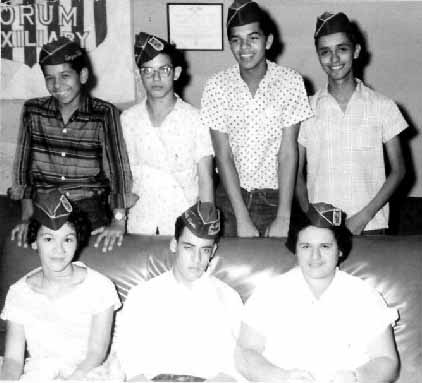
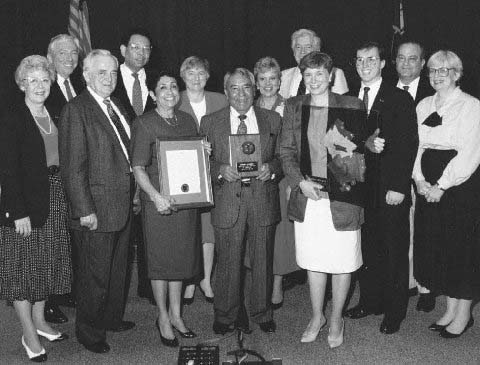
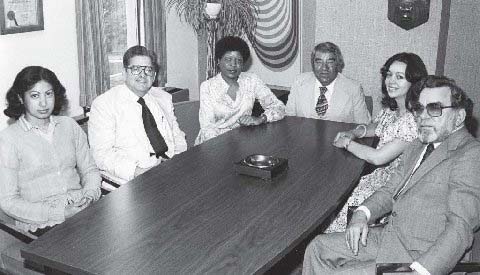
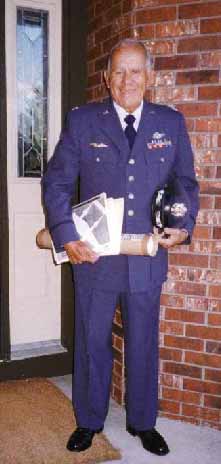

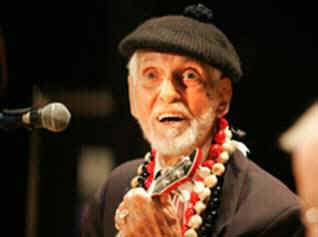
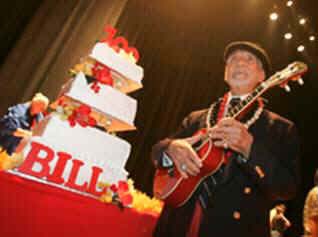
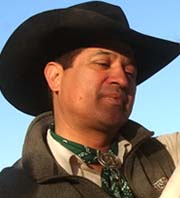
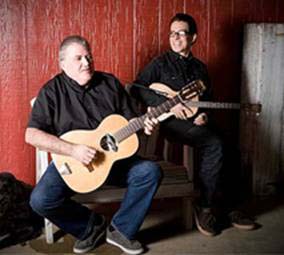
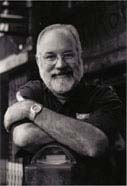
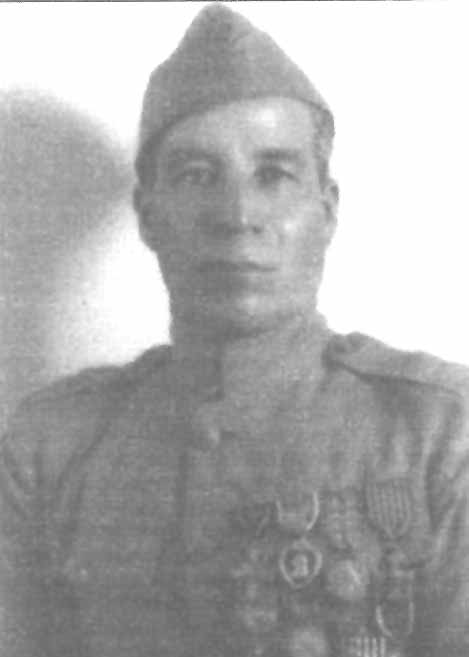



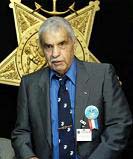
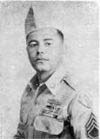

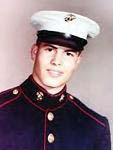
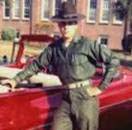
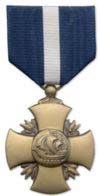
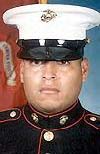

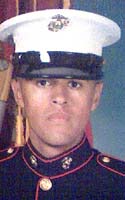
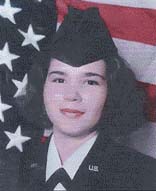 CIVILIAN
Geraldine Marquez
CIVILIAN
Geraldine Marquez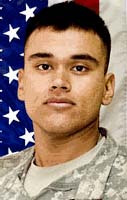 Army
Pfc. Alberto Garcia Jr.,
Army
Pfc. Alberto Garcia Jr.,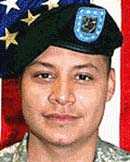
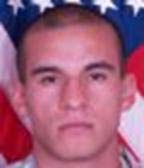
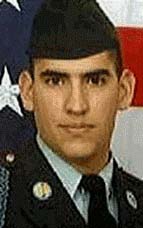
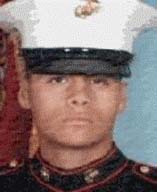
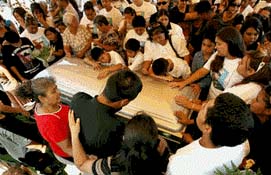
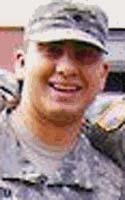
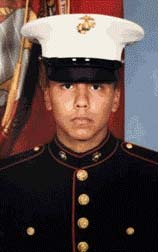
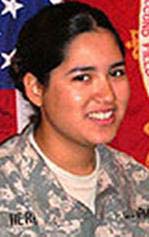
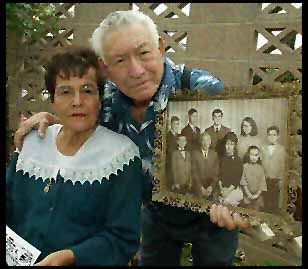 PLACENTIA
About 400 people attended Tuesday's services for a Placentia
patriarch. Alfred Aguirre a city native, community leader and World
War II veteran died of renal failure Jan. 9 at 87. At St. Joseph's
Catholic Church here, one of the eulogies was by Aguirre's son
Frederick, an O.C. Superior Court judge.The legacy that he leaves can
be summed up in three words: devotion, dedication and patriotism,"
Frederick Aguirre said of his dad. Born in Placentia in 1920,
Alfred Aguirre saw the community's growth from a small town amid orange
groves to a modern city.
PLACENTIA
About 400 people attended Tuesday's services for a Placentia
patriarch. Alfred Aguirre a city native, community leader and World
War II veteran died of renal failure Jan. 9 at 87. At St. Joseph's
Catholic Church here, one of the eulogies was by Aguirre's son
Frederick, an O.C. Superior Court judge.The legacy that he leaves can
be summed up in three words: devotion, dedication and patriotism,"
Frederick Aguirre said of his dad. Born in Placentia in 1920,
Alfred Aguirre saw the community's growth from a small town amid orange
groves to a modern city.

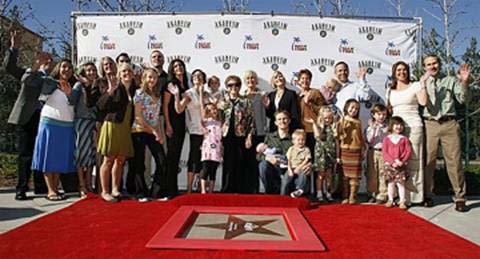
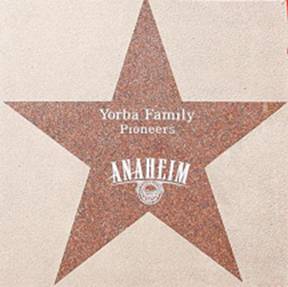
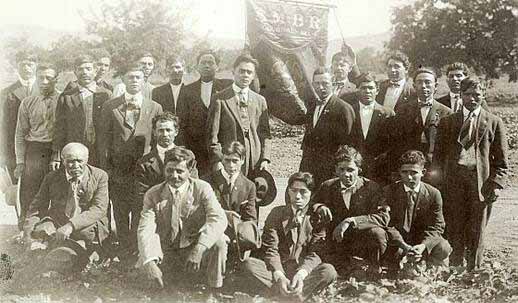
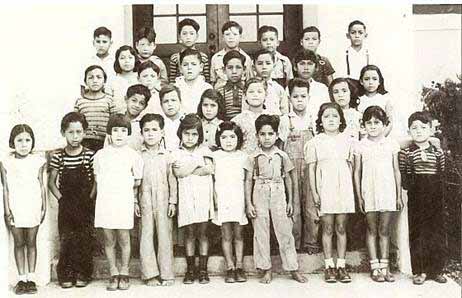 Grajeda
pointed out that some of the children in the photo aren't wearing shoes,
which, he said, shows the value they placed on education.
Grajeda
pointed out that some of the children in the photo aren't wearing shoes,
which, he said, shows the value they placed on education.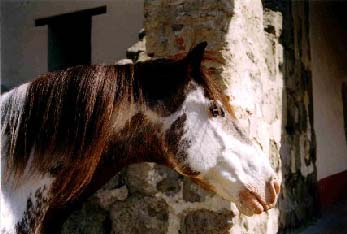 I
am hoping to preserve a unique window of time nearly lost for humanity
to recognize. Many often refer to it, as the golden period in our
western history and civilization. However, true as that is, it has yet
to see the remembrance that it so greatly deserves. So much of this rich
colonial cultural heritage has vanished, and many of the fragments that
do remain are
obscure or misunderstood. To re-claim this history for everyone to
appreciate is to fill a dark hole of time with beauty, majesty,
perseverance, and the reality of change.
I
am hoping to preserve a unique window of time nearly lost for humanity
to recognize. Many often refer to it, as the golden period in our
western history and civilization. However, true as that is, it has yet
to see the remembrance that it so greatly deserves. So much of this rich
colonial cultural heritage has vanished, and many of the fragments that
do remain are
obscure or misunderstood. To re-claim this history for everyone to
appreciate is to fill a dark hole of time with beauty, majesty,
perseverance, and the reality of change.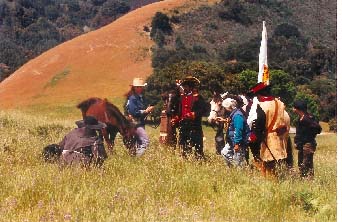 I
have been graced with custodianship of a noble and honored survivor of
this period...a remnant of the original Spanish horse. This fundamental
priceless thread of our cultural past still exists and has enriched my
life in a way unsurpassed by anything except the birth of my Son. With
time these Spanish horses have led me to view history from an
exceptional place from the heart, spirit and soul of our World. They
arrived with the peoples of an unequaled period of history and this
glimpse of a golden moment of world history still remains with their
presence.
I
have been graced with custodianship of a noble and honored survivor of
this period...a remnant of the original Spanish horse. This fundamental
priceless thread of our cultural past still exists and has enriched my
life in a way unsurpassed by anything except the birth of my Son. With
time these Spanish horses have led me to view history from an
exceptional place from the heart, spirit and soul of our World. They
arrived with the peoples of an unequaled period of history and this
glimpse of a golden moment of world history still remains with their
presence.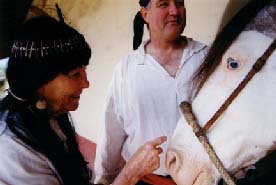 So,
as I enter my 18th year of personal dedication to these
horses and to our colonial history I am reaching out to you, the people
of this treasured historical heritage to assist in the conservation of
these time honored icons of our past and to help me preserve and
re-create an opportunity where this western Colonial history comes again
to life from which everyone can share and learn. I reach out to you not
for blind donations, instead I invite you to become personally involved
in the very heart of this mission.
So,
as I enter my 18th year of personal dedication to these
horses and to our colonial history I am reaching out to you, the people
of this treasured historical heritage to assist in the conservation of
these time honored icons of our past and to help me preserve and
re-create an opportunity where this western Colonial history comes again
to life from which everyone can share and learn. I reach out to you not
for blind donations, instead I invite you to become personally involved
in the very heart of this mission.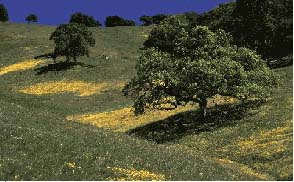 Pacheco
Pass Pacheco Pass is one of the few easy passages between the
coast and the great central valley. It serves as a convenient route for
people of the San Joaquin valley, Monterey, San Benito, Santa Cruz and
southern Santa Clara regions. It also serves as the home for the Central
Valley Yokuts tribe. This pass was a favorite haunt for the infamous
Joaquin Murieta and played a huge role in the Butterfield
Transcontinental
Pacheco
Pass Pacheco Pass is one of the few easy passages between the
coast and the great central valley. It serves as a convenient route for
people of the San Joaquin valley, Monterey, San Benito, Santa Cruz and
southern Santa Clara regions. It also serves as the home for the Central
Valley Yokuts tribe. This pass was a favorite haunt for the infamous
Joaquin Murieta and played a huge role in the Butterfield
Transcontinental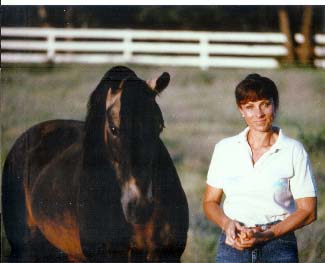 You
can visit our website,
You
can visit our website, 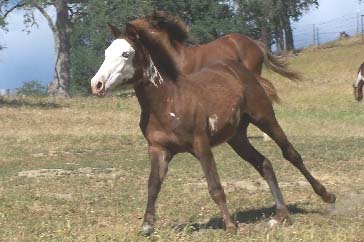

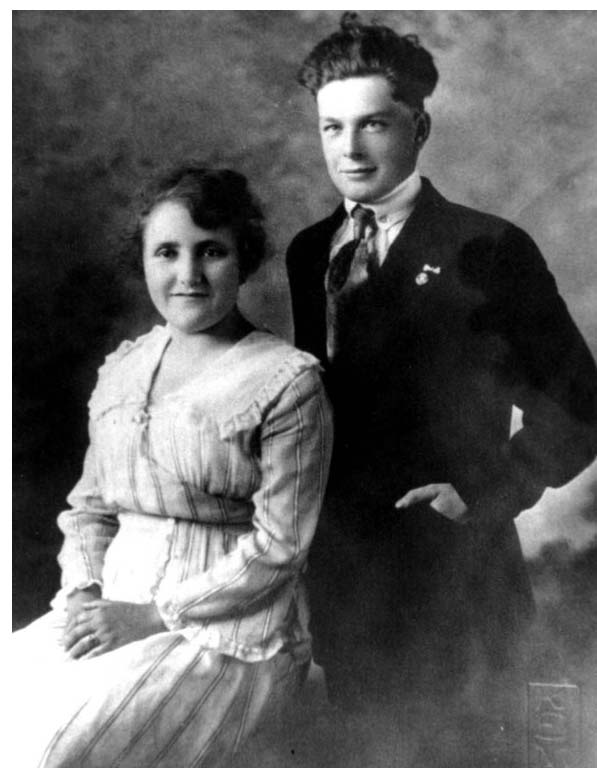

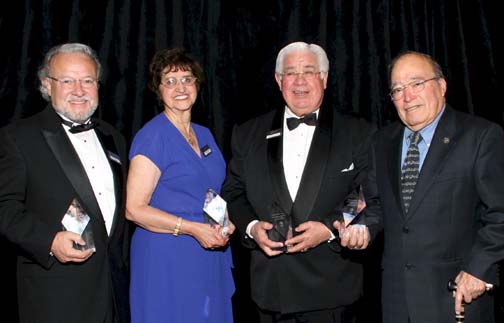
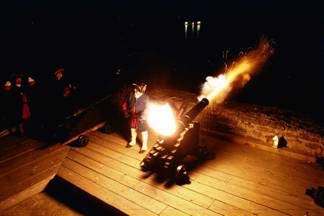
 El
alcalde de Zalamea
El
alcalde de Zalamea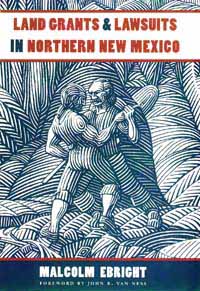 Malcolm
Ebright draws on his wide experience as a historian and attorney to
examine the history of New Mexico's land grants from their antecedents in
Spain and Mexico down to present-day land and water lawsuits. Ebright
narrates specific cases involving fraud, forgery, and injustice, as well
as courageous acts by land grant communities. Land Grants &
Lawsuits in Northern New Mexico presents a comprehensive and clear
account of clashing legal systems.
Malcolm
Ebright draws on his wide experience as a historian and attorney to
examine the history of New Mexico's land grants from their antecedents in
Spain and Mexico down to present-day land and water lawsuits. Ebright
narrates specific cases involving fraud, forgery, and injustice, as well
as courageous acts by land grant communities. Land Grants &
Lawsuits in Northern New Mexico presents a comprehensive and clear
account of clashing legal systems.
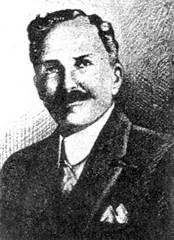
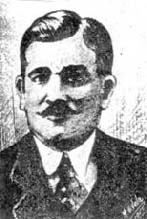
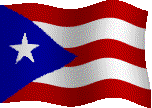
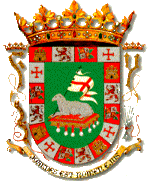
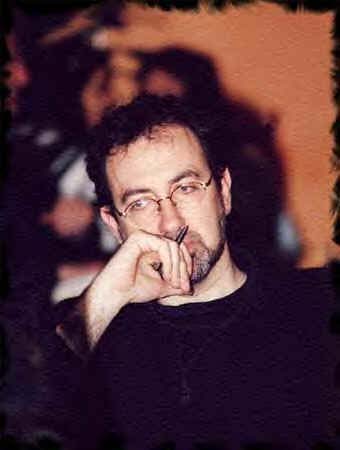 Sparing
her daughter sorrow is not something Gloria does lightly. Her own
childhood ebbed from her, as she spent her adolescence caring for an
increasingly ill father. Jose Manuel Fajardo, a former star of the Cuban
national volleyball team, and a policeman who served as the motorcycle
guard for Fulgencio Batista's wife, came to the United States with his
wife, Gloria, and baby, Glorita (as little Gloria was called), on a $21
plane ticket almost immediately after Castro took power. Within two
years, he was training for the Bay of Pigs invasion, and on the day of
the landing he commanded the exile brigade's tank division. He was
captured by his own cousin, who was in Castro's army, and held for
nearly two years.
Sparing
her daughter sorrow is not something Gloria does lightly. Her own
childhood ebbed from her, as she spent her adolescence caring for an
increasingly ill father. Jose Manuel Fajardo, a former star of the Cuban
national volleyball team, and a policeman who served as the motorcycle
guard for Fulgencio Batista's wife, came to the United States with his
wife, Gloria, and baby, Glorita (as little Gloria was called), on a $21
plane ticket almost immediately after Castro took power. Within two
years, he was training for the Bay of Pigs invasion, and on the day of
the landing he commanded the exile brigade's tank division. He was
captured by his own cousin, who was in Castro's army, and held for
nearly two years.
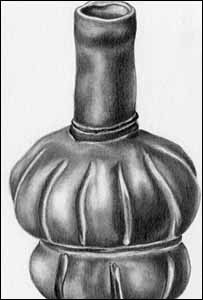 "The
earliest use of cacao in Mesoamerica is likely to have been for a
fermented drink," lead author Professor John Henderson wrote in
the Proceedings of the National Academy of Sciences (PNAS).
"The
earliest use of cacao in Mesoamerica is likely to have been for a
fermented drink," lead author Professor John Henderson wrote in
the Proceedings of the National Academy of Sciences (PNAS).
